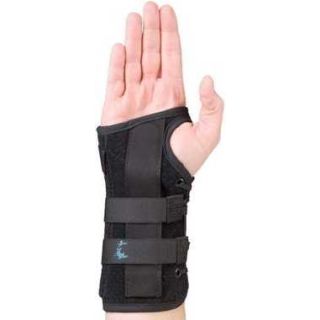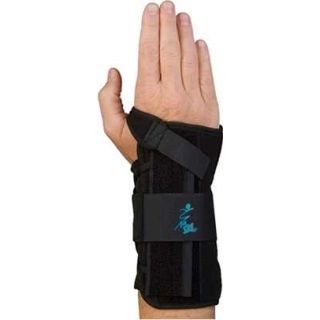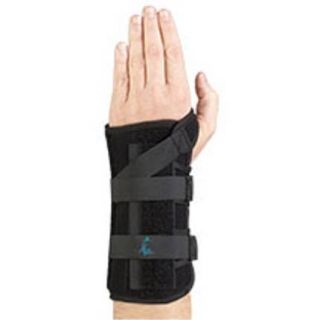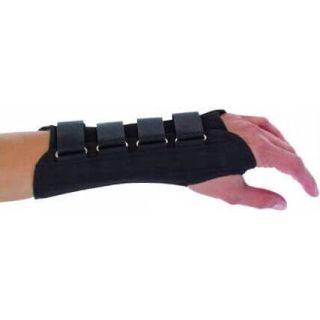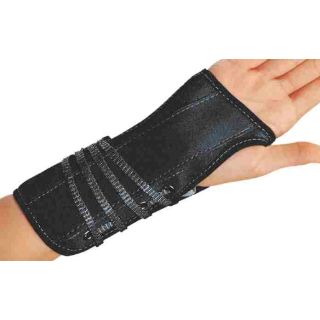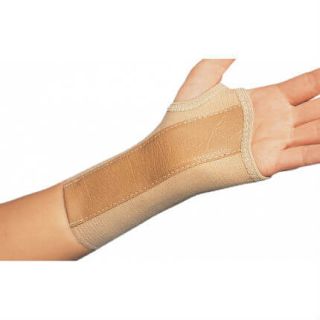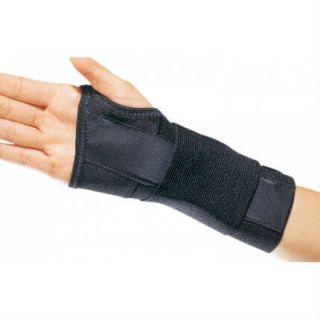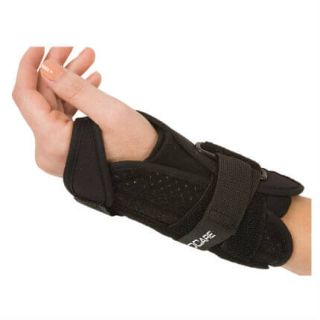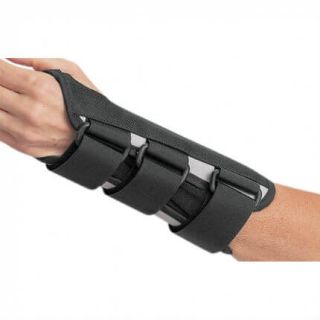Finding Relief with a Carpal Tunnel Brace: A Comprehensive Guide
Carpal tunnel syndrome (CTS) is a common condition that causes pain and swelling, and tingling or numbness in the hand and wrist. These symptoms can significantly impact daily life, making even simple tasks challenging. A carpal tunnel brace, also known as a wrist brace or splint, is a common and effective tool for managing CTS symptoms and promoting healing. This comprehensive guide will delve into the world of carpal tunnel braces, exploring their benefits, types, features to consider, proper usage, and how they can help you regain comfort and functionality.
Understanding Carpal Tunnel Syndrome and the Role of a Brace
Carpal tunnel syndrome occurs when the median nerve, which runs from your forearm into your hand, becomes compressed as it passes through the carpal tunnel. This narrow passageway in your wrist is formed by bones and ligaments. When the tissues surrounding the median nerve swell, they put pressure on the nerve, leading to the characteristic symptoms of CTS.
A carpal tunnel brace plays a crucial role in managing CTS by:
- Immobilizing the wrist: The brace holds your wrist in a neutral or slightly extended position, preventing excessive bending or flexing that can further compress the median nerve. This is particularly important during sleep, when many people tend to unconsciously flex their wrists.
- Reducing pressure on the median nerve: By maintaining a neutral wrist position, the brace helps to alleviate pressure on the median nerve, and relieve the pain, numbness, and tingling.
- Supporting the wrist joint: The brace provides support to the wrist joint, helping to reduce strain and inflammation. This can be especially beneficial during activities that aggravate CTS symptoms.
- Promoting healing: By reducing pressure and inflammation, a carpal tunnel brace creates an environment conducive to healing, allowing the median nerve to recover.
Types of Carpal Tunnel Braces
Carpal tunnel braces come in various styles, each designed for specific needs and preferences:
- Cock-up Splints: These are the most common type of carpal tunnel brace. They feature a rigid palmar (palm-side) splint that keeps the wrist in a neutral or slightly extended position. Cock-up wrist splints are often recommended for nighttime use, as they provide maximum immobilization.
- Wraparound Braces: These braces offer more flexibility and can be used for both day and night. They typically have adjustable straps for a customized fit and allow for some wrist movement. Wraparound braces are a good option for those who need support during activities but still require some range of motion.
- Glove-Style Braces: These braces cover the entire hand and wrist, providing comprehensive support. They may be preferred by individuals with more severe CTS symptoms or those who need additional support for daily activities.
- Adjustable Braces: Many braces offer adjustable features, such as straps, closures, and malleable stays, allowing for a personalized fit and level of support. This adjustability is crucial for comfort and effectiveness.
Key Features to Consider When Choosing a Carpal Tunnel Brace
Selecting the right carpal tunnel brace is essential for effective symptom management. Consider the following features:
- Material: Braces are made from various materials, including:
- Neoprene: This synthetic rubber is warm (helps improve blood flow), provides good compression, and is often used in wraparound braces.
- Elastic: Elastic materials offer flexibility and breathability, making them suitable for daytime use.
- Spandex: Spandex provides a snug fit and allows for good range of motion.
- Metal: Some braces incorporate metal stays for added support and immobilization of the wrist and hand.
- Size and Fit: Choosing the correct size is crucial. Measure your wrist circumference and follow the manufacturer's sizing guidelines. A brace that is too tight can restrict circulation, while one that is too loose won't provide adequate support.
- Adjustability: Look for a brace with adjustable straps or closures to ensure a comfortable and secure fit. Adjustable features allow you to customize the level of support and compression.
- Comfort: You'll likely be wearing the brace for extended periods, so comfort is essential. Consider features like padding, breathable materials, and smooth edges to prevent skin irritation.
- Intended Use: Determine when you'll be wearing the brace. For nighttime use, a more rigid cock-up splint may be preferable. For daytime use, a more flexible wraparound or glove-style brace might be more comfortable and allow for greater mobility.
- Handedness: Carpal tunnel braces are typically designed for either the right or left hand. Make sure you choose the correct one.
- Durability: Look for a brace made from durable materials that will withstand regular use and washing.
How to Use a Carpal Tunnel Brace Effectively
Proper usage of your carpal tunnel brace is essential to maximize its benefits:
- Follow the instructions: Always follow the manufacturer's instructions for wearing and caring for your brace.
- Wear it as directed: Your doctor or therapist will recommend how often and for how long you should wear the brace. Typically, nighttime use is recommended, but you may also need to wear it during activities that trigger your symptoms.
- Adjust the fit: Ensure the brace is snug but not too tight. You should be able to move your fingers freely. If you experience any numbness or tingling in your fingers while wearing the brace, it may be too tight.
- Clean the brace regularly: Follow the manufacturer's cleaning instructions to keep the brace clean and hygienic. This will help prevent skin irritation and prolong the life of the brace.
- Combine with other treatments: A carpal tunnel brace is often used in conjunction with other treatments, such as physical therapy, medication, or in some cases, surgery. Talk to your doctor about the best treatment plan for you.
Benefits of Using a Carpal Tunnel Brace
Using a carpal tunnel brace can offer several benefits:
- Pain relief: By reducing pressure on the median nerve, a brace can help alleviate moderate carpal tunnel pain and discomfort.
- Reduced numbness and tingling: Immobilizing the wrist in a neutral position can help minimize these bothersome symptoms.
- Improved sleep: Wearing a brace at night can prevent wrist flexion and improve sleep quality.
- Support for daily activities: A brace can provide wrist support during activities that aggravate carpal tunnel symptoms, allowing you to maintain a more active lifestyle.
- Prevention of further damage: By reducing strain on the wrist, a brace can help prevent further damage to the median nerve.
When to See a Doctor
While a carpal tunnel brace can be an effective treatment option for many people, it's important to see a doctor if:
- Your symptoms are severe or worsening.
- You've tried conservative treatments, including a brace, and your symptoms haven't improved.
- You experience persistent weakness or loss of grip strength in your hand.
- You notice muscle wasting (atrophy) in the thenar eminence (the fleshy base of the thumb).
Finding the Right Fit for Relief
Choosing the right carpal tunnel brace is a crucial step in managing your CTS symptoms and improving your quality of life. By considering the factors outlined in this guide, you can find a brace that provides the support and comfort you need. Remember to consult with your doctor or a healthcare professional for personalized advice and treatment recommendations. Don't let carpal tunnel syndrome hold you back – find the perfect carpal tunnel brace and take control of your hand health.
 Details$28.99 $24.99
Details$28.99 $24.99 Details$27.99 $20.99
Details$27.99 $20.99 Details$29.99 $24.99
Details$29.99 $24.99 Details$23.99 $18.98
Details$23.99 $18.98 Details$33.99 $24.99
Details$33.99 $24.99 Details$36.99 $27.99
Details$36.99 $27.99 Details$40.99 $32.49
Details$40.99 $32.49 Details$28.99 $19.99
Details$28.99 $19.99 Details$32.99 $23.99
Details$32.99 $23.99 Details$42.99 $33.49
Details$42.99 $33.49 Details$39.99 $30.99
Details$39.99 $30.99 Details$34.99 $24.99
Details$34.99 $24.99
